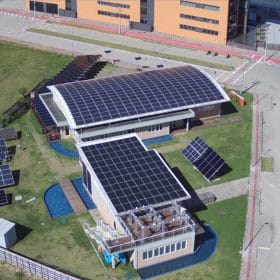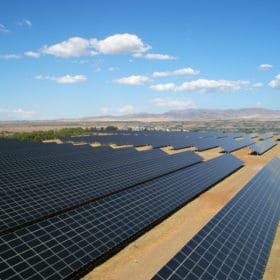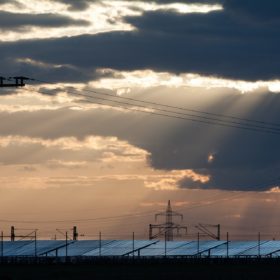Consultant plays down Chinese solar fever
The nation is set to have added 40 GW of solar in 2020 and that figure will rise again this year, to 45-50 GW, according to one of the year’s first industry predictions.
EDP acquires stake in Brazilian distributed-gen PV company
Portuguese utility EDP has agreed to buy a minority stake of up to 40% in Brazil’s Blue Sol Participações.
India’s solar sector in 2020
India’s PV industry has experienced an eventful year, with record lows in both new capacity additions and tariffs.
Assessing PV performance in zero-energy building
A Brazilian research team has shown the advantages of linking solar-powered zero-energy buildings to recharging stations for electric vehicles. It proposed a model that can be applied to any location.
Structural factors driving down PV prices in India
An analysis by India Ratings and Research (Ind-Ra) says improvements in PV panel designs and costs, lower financing costs and state-specific sectors, such as the location’s solar potential and certain waivers, have driven the decline in Indian solar tariffs.
Italy extends 110% fiscal break for rooftop PV linked to building renovations to 2022
The so-called “super bonus” for building renovation projects has been extended until the end of 2022. The Italian government has established a maximum price of €2,400 per kilowatt installed for PV systems and €1,000/kWh for storage systems.
BIPV windows viable only if they add soft value to buildings
Solar windows are only likely to reach commercial maturity when manufacturers consider how they can add “soft” value to buildings, as required by the construction industry. In order to increase this value, increasing their conversion efficiency will become less important, while understanding how to blend them into the existing value chain in the real estate business will be crucial.
Sweden continues rooftop PV rebate scheme for businesses, municipalities
Sweden was set to replace its rebate scheme with unspecified tax breaks by the end of this year, but the government has instead decided to allocate another $31.5 million for 2021 – for enterprises and municipalities only.
Batteries and hydrogen to make residential off-grid PV technically feasible
Researchers in Finland have demonstrated the technical feasibility of an off-grid residential PV system combined with short-term battery storage and seasonal hydrogen storage. The proposed model is applicable only to northern climates, as higher levels of solar radiation in southern locations would mean a reduced need for seasonal storage. It was tested in an existing single-family house in Finland with a 21 kW rooftop array and a ground source 6 kW heat pump.
The US deployed 3.8 GW of solar in Q3
According to the Solar Energy Industries Association (SEIA) and Wood Mackenzie, solar accounts for 43% of all new electric generating capacity additions through Q3 2020, more than any other electricity source.










